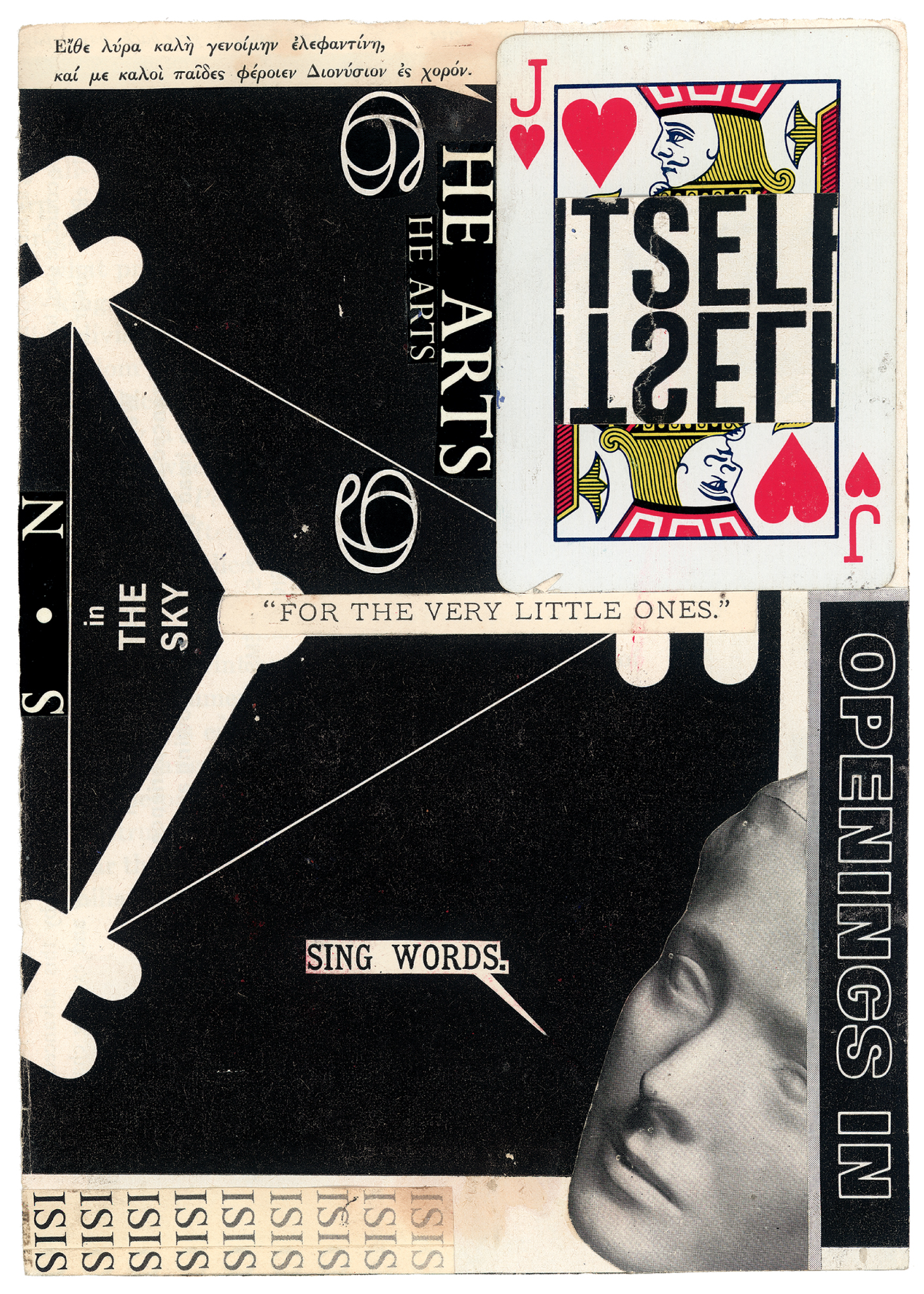【Taste of Secret Sex】
Jessoterica
Look

Interior page from From Force of Habit, 1966, collage book, approx. 8″ x 5 ¾ ”. Courtesy of the Odyssia Gallery, New York, NY.
Jess Collins, better known as just Jess, was a painter and collagist born today in 1923. Jess spent most of his life in the Bay Area, where he lived with his longtime partner, the poet Robert Duncan. (The latter died in 1988; the former in 2004.) In our Fall 2012 issue, The Paris Reviewfeatured some of Jess’s work in collage, or “paste-ups”; as our own Nicole Rudick explains,
Jess and Duncan shared a lifelong interest in salvaging esoteric bits of culture past—in Jess’s case, Goodwill cast-offs, Dick Tracyand Krazy Katcomics, advertisements for Tabu, and Lifemagazine, but also tarot cards, Renaissance chapbooks, Greek mythology, Victorian engravings, and Arthurian legend. As he worked, he would choose from among thousands of carefully cut-out images, painstakingly organized by subject. His recollection of an abandoned prospector’s shack, which he discovered as child, aptly describes his own studio: “a little palace assembled from … almost any type of found object you can imagine.”
If you want to explore more of Jess’s work, earlier this year the Timesran an excellent piece on him, Duncan, and their coterie:
Where Duncan’s art explodes, Jess’s only threatens to, which is much more interesting … Jess is best known for his collages, which he called paste-ups: staggeringly intricate symbolic narratives pieced together from bits of scientific treatises, muscle magazines, art history books, cartoons and popular periodicals like Lifeand Time. This work is not lost-in-the-clouds stuff. A 1968 collage in response to the war in Vietnam called “The Napoleonic Geometry of Art—Given: The Pentagon in the Square: Demonstrate: The Hyperbolic Swastika,” is about as pointedly angry as art can be.
And Hyperallergic published a great essay in February, wherein Christopher Lyon identifies Duncan and Jess’s
sustained faith in make-believe—that one can simultaneously be oneself and be many selves, past and future; that one can embrace the everyday and simultaneously experience in it an intensified poetic reality. Embedded in art or poetry, make-believe expresses a faith that someone in an unknowable future will engage with one’s work and re-experience that intensification of the moment—this is existentialism recast as myth.





Related Articles